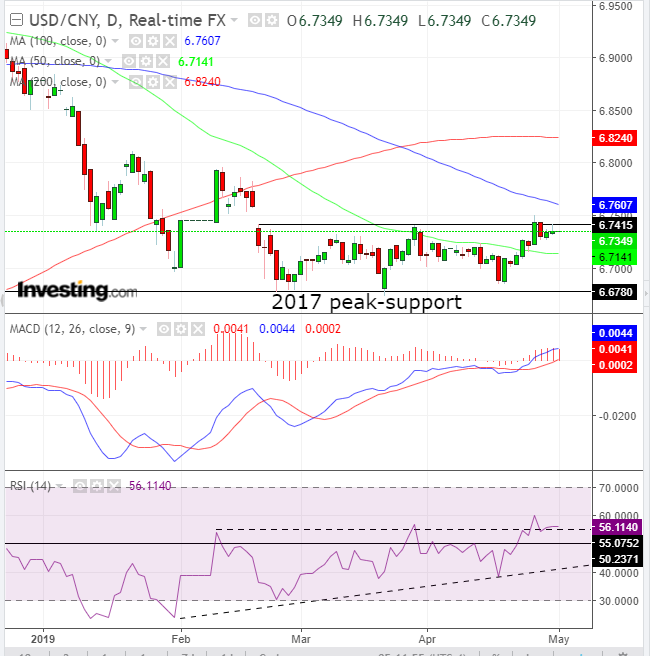Today’s Fed meeting, along with another round of promising trade talks between the world’s two largest economies, the U.S. and China, promise ample play for the world’s reserve currency. Another strong driver for the U.S. dollar is foreign demand for Treasurys, which are affected by the outlook for rates, as well as risk.
This, in turn, is influenced by the Fed’s accommodation. All of which is compounded by the fact that investors have been increasing Treasury holdings even as they have been driving stocks higher. There's a third analytical layer to this complex theme as well: one of the central issues of the trade dispute is China's currency — specifically whether the Asian country manipulates its yuan to gain unfair trade advantage over the U.S.
We've speculated in prior posts that China may be pulling the strings according to their trade negotiation tactics. But while we don’t know what those might be, nor could we know what the Fed will say, how it will say it, and how the market will react to it, or how investors would finally interpret it, by examining the technical charts and the patterns they suggest, we're hopeful of a dollar-Chinese yuan bottom.

Chart powered by TradingView
The USD/CNY is poised for a triple bottom reversal. Although the pattern is complete only with an upside breakout, we expect there to be one, for the following reasons;
- Support from the October-December 2017 highs of the final downtrend-peak.
- Overcoming the 50 DMA.
- While the 100 DMA fell below the 200 DMA – a bearish sign – throughout the pattern development, the 100 DMA is now curving upward, in support of rising prices, toward the 200 DMA.
- The MACD provided a buy signal, crossing over the zero line, with the shorter MA in the lead.
- The RSI provided a positive divergence, bottoming out ahead of the price.
Trading Strategies
Conservative traders should wait for a decisive upside breakout, to include an ascending peak-trough formation, according to the stricter interpretation of a reversal.
Moderate traders could rely on a decisive upside breakout, followed by a return move to retest the neckline.
Aggressive traders could risk a long position now, provided they first write out a clear trading plan they are committed to stick with, through thick and thin, in what could prove to be volatile trading.
Trade Sample
- Entry: 6.7350
- Stop-Loss: 6.7263, the lowest trade since the third neckline penetration Thursday
- Risk: 87 pips
- Target: 6.7600, 100 DMA
- Reward: 250 pips
- Risk-Reward Ratio: 1:3
